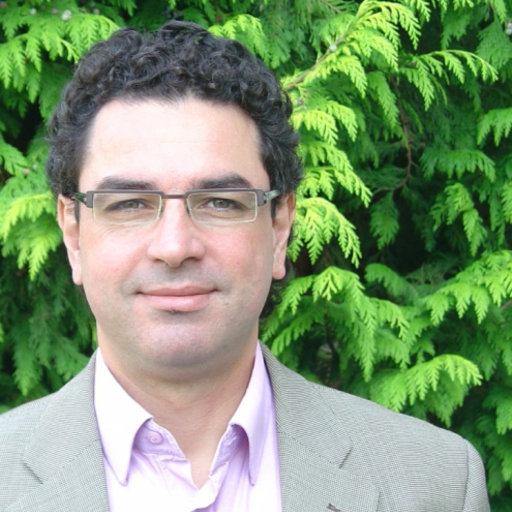
In the Media: Opinion article in Jornal i by INESC ID researcher Rui Castro
Rui Castro, researcher at INESC ID and full Professor at Instituto Superior Técnico, authored an opinion article published in the newspaper “Jornal i” titled “Energy storage systems in the electrical grid: What are we waiting for?” (“Sistemas de armazenamento de energia na rede elétrica: Estamos à espera de quê?”).
The article discusses the complexity of the electrical power system and its dependence on a wide variety of different generator types each one with its own characteristics, from natural gas, to hydroelectric, wind, and solar power. Rui Castro emphasizes a fundamental constraint regarding the power system, which is that the balance between electricity production and consumption must be met at every second. This restriction is pivotal for the safe operation of the electrical grid.
The article approaches two promising alternatives for energy storage: batteries and hydrogen. The INESC ID researcher acknowledges that it is possible with current battery technology to store and later release large amounts of electrical energy at a national level, but the high cost is still an issue. Nevertheless, the author predicts that soon, as technology advances and the cost of batteries decreases, this will be a competitive and economically viable option for large-scale energy storage. Regarding hydrogen, the production process through electrolysis during periods of low energy consumption is still expensive and inefficient. However, technological advancements are expected to make it viable in the longer term.
Both are considered viable options for energy storage and helpful for power system’s stability, with batteries expected to become competitive sooner. At the same time, hydrogen may be an alternative in the longer term, depending on technological advancements and cost reductions.
According to Rui Castro, Portugal needs to anticipate and prepare a future centered on an electrical system able to rely almost 100% on renewable energy sources. As a closing observation, the INESC ID researcher highlights that it is urgent to invest in efficient energy storage systems. The question is: what are we waiting for?
Full article here.
Upcoming Events
NII International Internship Programme Presentation and Q&A by Emmanuel Planas

On April 30, Emmanuel Planas, the acting director of the Global Liaison Office (GLO) and responsible for the internationalisation program at the National Institute of Informatics (NII) in Tokyo, Japan, will give a presentation to introduce the NII and its internship program to INESC-ID students and IST’s Master’s in Computer Science students.
Date & Time: April 30, 14h00
Where: Sala Polivalente, Técnico – Taguspark
“The NII International Internship Program is an exchange activity with students from institutions with which NII has concluded a Memorandum of Understanding (MOU) agreement. This incentive program aims at giving interns the opportunity for professional and personal development by engaging in research activities under the guidance and supervision of NII researchers.
The NII Internship Program is open to Research Master’s and PhD students who are currently enrolled at one of the partner institutions that have signed an MOU agreement with NII.”
Educational Workshop on Responsible AI for Peace and Security (UNODA)

On June 6 and 7, The United Nations Office for Disarmament Affairs (UNODA) and the Stockholm International Peace Research Institute (SIPRI) are offering a selected group of technical students the opportunity to join a 2-day educational workshop on Responsible AI for peace and security.
The third workshop in the series will be held in Porto Salvo, Portugal, in collaboration with GAIPS, INESC-ID, and Instituto Superior Técnico. The workshop is open to students affiliated with universities in Europe, Central and South America, the Middle East and Africa, Oceania, and Asia.
Date & Time: June 6 a 7
Where: IST – Tagus Park, Porto Salvo
Registration deadline: April 8
Summary: “As with the impacts of Artificial intelligence (AI) on people’s day-to-day lives, the impacts for international peace and security include wide-ranging and significant opportunities and challenges. AI can help achieve the UN Sustainable Development Goals, but its dual-use nature means that peaceful applications can also be misused for harmful purposes such as political disinformation, cyberattacks, terrorism, or military operations. Meanwhile, those researching and developing AI in the civilian sector remain too often unaware of the risks that the misuse of civilian AI technology may pose to international peace and security and unsure about the role they can play in addressing them. Against this background, UNODA and SIPRI launched, in 2023, a three-year educational initiative on Promoting Responsible Innovation in AI for Peace and Security. The initiative, which is supported by the Council of the European Union, aims to support greater engagement of the civilian AI community in mitigating the unintended consequences of civilian AI research and innovation for peace and security. As part of that initiative, SIPRI and UNODA are organising a series of capacity building workshops for STEM students (at PhD and Master levels). These workshops aim to provide the opportunity for up-and-coming AI practitioners to work together and with experts to learn about a) how peaceful AI research and innovation may generate risks for international peace and security; b) how they could help prevent or mitigate those risks through responsible research and innovation; c) how they could support the promotion of responsible AI for peace and security.”
